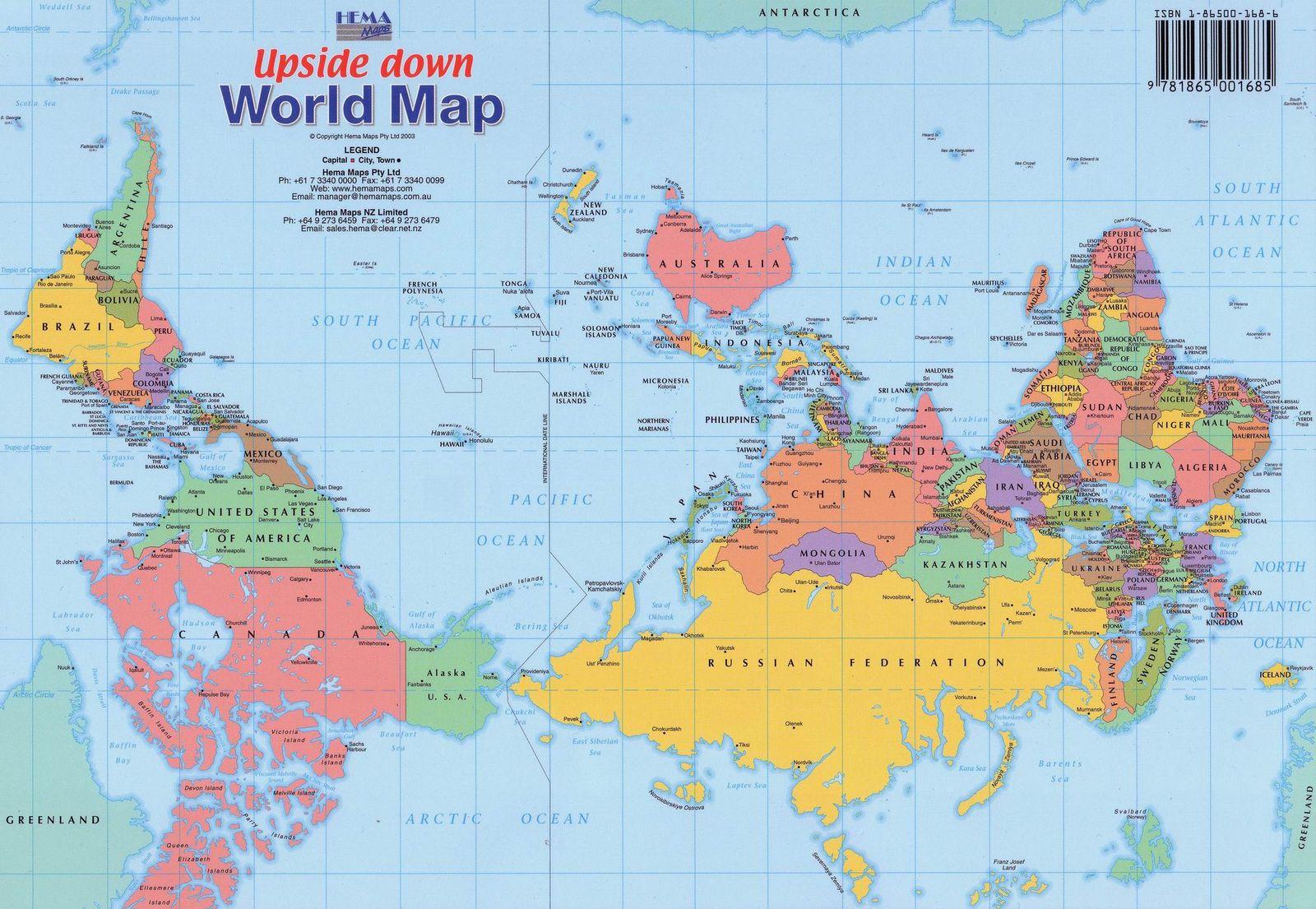
(Alternate Universe)
Navigation point to other pages:
The alternate universe of Terra diverged from the world as we know it during the period 1810-1850. The widest change is in the Antipodes where the lands known in our world as Australia and New Zealand become the Federated States of Australis. The general names of North and South Island are changed to reflect some of the migrants that arrived in 1750-1800 from Holland, Drenthe and Brabant respectively.

While Australis holds a mixed racial population it is based on the European "White & Christian" peoples from mainly the United Kingdom with pockets of Dutch, French, Germans, Italians, Spanish and others. These peoples were sure of their ascendancy over the dark skinned races and wars with the Aborigines and Maoris were inevitable and led to the virtual genocide of both races. The lands that were opened up by this cleansing of the land of the ungodly (only those 'heathens' that had converted and accepted Christianity survived) were deeded to soldiers who had fought for the crown and others who had proved themselves worthy of land grants in other ways. Early settlers paid a premium to the Crown in Britain for land unseen until they arrived after 3-5 months travel that not all survived. (I know its not very PC but white supremacy was rampant during this time)
The idea of Australis is to turn what is now
"Australia and New Zealand" upside down and improve the place into a green and
growing nation, where many peoples can live. To do this requires a bit of give
and take with history (Alternate Universe) from about 1850 onwards.
It is the industrial revolution that has the ability to make Australia a great
nation within the Commonwealth. Britain had ensured that Australia would remain
'industrially' poor till after 1945 when Australia became its own self governed
country though gleams of this desire started showing in the 1920-30's, the 2nd
World War made it inevitable. While Australia has had the ability to become a
manufacturing power the rise of the "Cheap East" labour pool and lack of
oversight of the major corporations has meant that Australia has remained a
minor power though its government has an overinflated sense of its own self.
The power of people to help drive the industrial revolution can be seen
throughout those countries that were at the heart of the revolution, Britain and
its colonies were the greatest power in the world, resources poured into Britain
at an amazing rate with the results of the resources going back into the world
as manufactured products. We need to siphon off some of those production
facilities to Australia and to enlarge the Australian population in ways that
allow the new 'people and manufacturing power' to support each other.
Some of Englands greatest feats of engineering took place during this 1800-1900
period, the building of the Canal and railway networks (virtually by hand) being
two notable events that Australia needed to copy.
For Australia to become 'Australis' requires people, and these people need to
arrive in Australis during a time when 'sail' was still king so transporting
large numbers of people is difficuilt when the ships carrying capacity is still
small. From 1890 to 1910 it is far easier to do the same transport job with the
powered vessels then available.
The next question is where to get people from that will integrate into the
largely white/christian British based population. White and Christian are the
main requirements - language can be learned quickly enough - and these people
are available in what is then the Ottoman Empire and Balkan states. The Turks
come a close second (to Germany) when it comes to ethnic cleansing, the
Christians of the Ottoman Empire do not fare well with 2-3 million being killed
and expelled during the 1850-1930 timespan. Industry again fuelling this pogrom
as the minor peoples of the land began increasing at a faster rate placing
strains on the infrastructure. The Empiric way to cure this is to get rid of the
problem - goodbye Assyrians, Armenians, Circassians etc. The point is to get someone in that
region reporting to Australis that these events are beginning to happen and
Australis to do a deal with the Ottoman Empire and Russian Empires to transport all the people the
Turks wish to expel to Australis, where the people are used to fuel the growth
of the Australis infrastructure by getting water projects into place (dams,
canals, irrigation), laying the road and rail systems and helping the growth of
the manufacturing centers.
Coal and iron ore are the major requirements for the continued growth of
industry. Iron & Steel to build the machines and a lot of the infrastructure requires
it too.
Australis: being the central government of the confederated states of Australia
and New Zealand (which was retained tied to Australis past the 1840 Waitangi
date). This joint nation has access to lots of the resources required to fuel
their own industrial revolution (plus a few extras 'given' to them in this
universe). Iron sands of high quality abound down the West coast of North Island
and high quality coal from the West coast of South Island (oil and gas in the
future too) meant that NZ would remain tied to Australis. Shipping these
resources to UK was expensive - shipping the same resources accross the ditch to
Australia is no problem. Australia has its own coal, iron ore and (in the
future) oil/gas resources to make the Australis Industrial Revolution a reality.
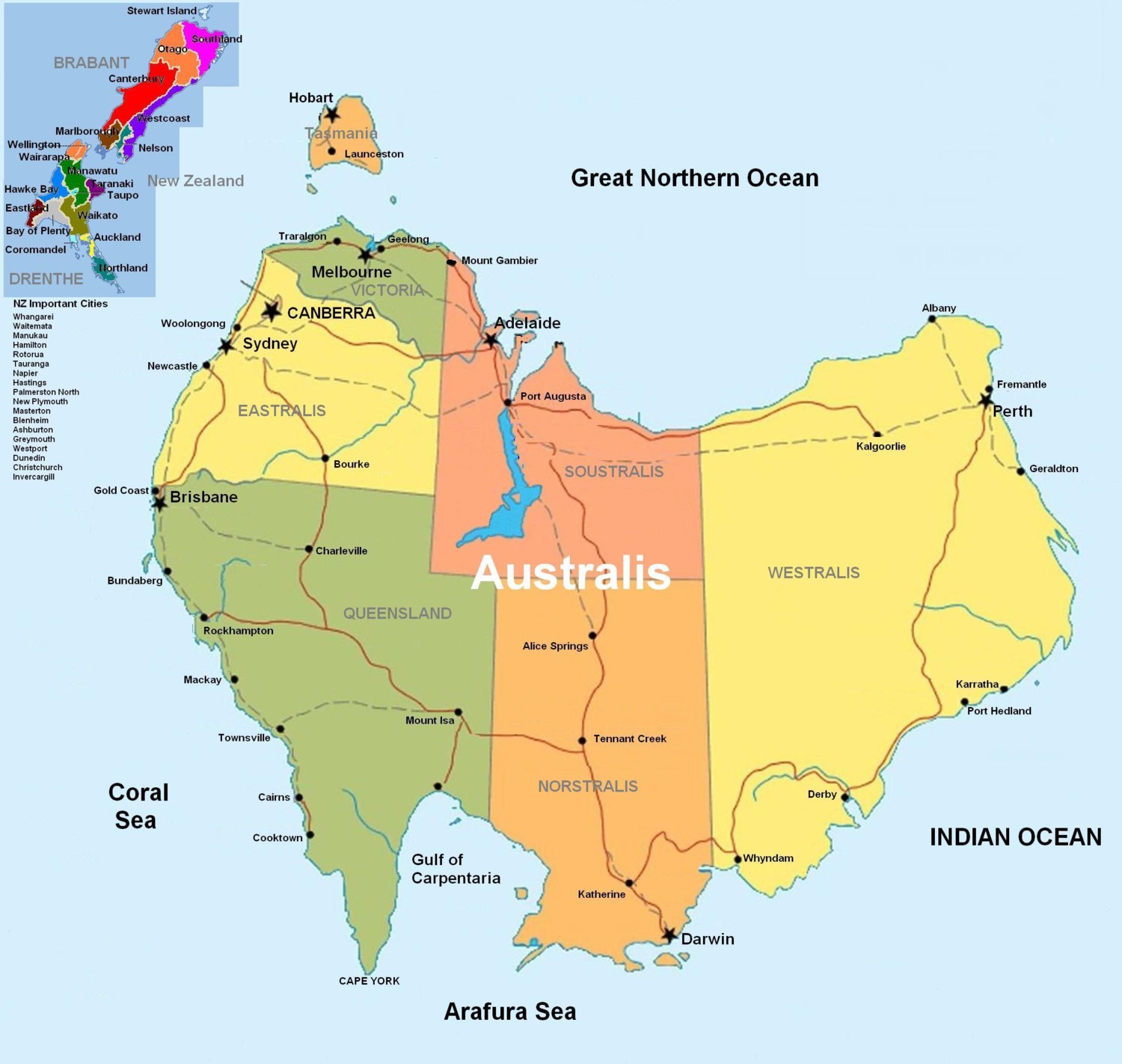
One of the problems is where to make the Industrial Revolution take place in
Australis and how to get the resources to where they are required.
The coal to fuel the revolution is along the East Coast of Australia and west
coast of Brabant (South Island). The major iron ore deposits are based in Western
Australia and South Australia. Other metals come from Mt Isa and the Broken Hill
region. The major sources to export to in the 1850-1910 timespan are Europe and
the US. Though if the products are available to the Eastern nations (Japan,
China etc) at a rate favourable to them, those markets would also be available
for manufactured goods.
Where, that is the major problem - Darwin would be ideal but is not that
agreeable in climate and surrounding areas untill medicine is available to cure
its problems. Darwin has a magnificent harbour and is one of the prime
Naval bases.
Having to send the resources a long way to process them lowers their value with
every mile they travel. Then to turn around and send the product to another
point for either further processing or export further reduces the value. Because
of the vastness of Australia their need to be at least 4 processing points for
the basic resources. Auckland, Perth, Adelaide and Sydney.
Where you have land access to all the points you wish to travel to then rail
travel is the link of choice with sea links and eventually air links.
1869 with the opening of the Suez canal and the opening of the southern European
nations to Australis travel and sales markets for food is the time when
Australis' population jumps significantly: 1850 = 800,000 / 1870 = 2.4mil / 1880
= 4.5mil / 1890 = 7mil / 1900 = 11mil / 1910 = 16.5mil. The ships leave
Australis with produce and return with immigants.
Several things fuelled this growth - the enforced migrations as noted above
(6mil 1850 to 1910) the gold rush era and the normal migration of people from
(southern) Europe to the new promised land.
To make this work the enforced migrants have to do a 5 year bond of employment
to the government to pay for their transportation and their eventual deed of
ownership of the land they help clear and access. This gives the government a
workforce of at least 1/2 million a year to build the infrastructure required to
get ahead of the population curve. Water Water Water, that is what drives how
fast an area can grow. The capture and retention of water and funelling it where
it needs to go is paramount. During the same period the building of the road
& rail networks between points of manufacturing and processing is also
undertaken.
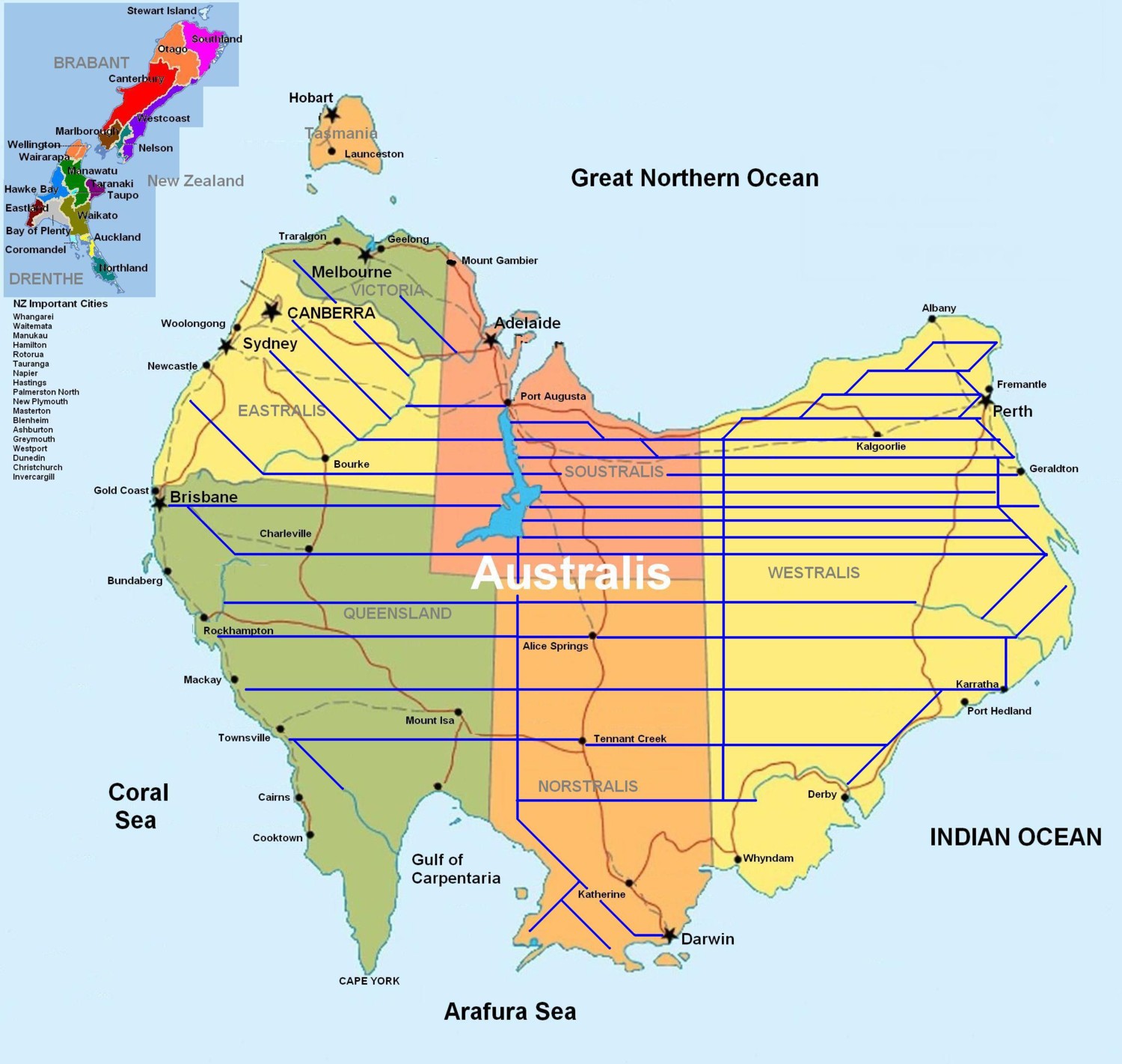
The way to future growth of Australis is the reclaiming of the semi-desert
regions. Again it is the rail/road water infrastructure that is needed to do
this. The carrot to the people to do this is the ownership of the land.
Smallholdings growing food to feed those on the land with an excess for sale
gives more and more advancement of population growth. Farms/farmers produce
large families with greater growth. The excess children of working age fuel the
city/urban population growths. It becomes exponential.
Once the canal, road & rail systems are in place and finished with dams and manmade lakes at strategic positions to feed the canal system the people used to produce these modern wonders start fueling the population in family growth and using the manufactured goods made in Australis, eat the food produced throughout Australis. One of the very first set of learning institutions produced was a set of universities offering 'medical' training in both Doctor, Nurse categories. The need for medical people at the canal/railheads was forseen and imports with carrots were first used untill the university system could produce enough of its own. The roads and rail system would have been pushed through at the same time as the canals and all 3 would have been dug out and laid at the same time. The land being opened up at the 'head' of the system as it moved on. The dams would be fitted as hydro-electric production centers, feeding an ever growing need for electrical power. New Zealand being further north of Australia does not require the same amount of resources to create a verdant land with plenty of rivers and lakes to provide the necessary water resources for population, infrastructure & economic development. New Zealands population increased at the same sort of rates as the Aussie half of Australis with population reaching 3 million in 1910, the same indenture system operated for New Zealand for creating the dams and hydro systems required for the growth of industry in mainly the south Drenthe region.
A double tracked rail link would need to be created between Sydney to Adelaide, Adelaide to Perth and Adelaide to Darwin. This link system would carry the vast amounts of resources and products to each center while Perth and Sydney were the main export centers. In New Zealand the two main centers (equivalent to the Australian State capitals) were Auckland (for Drenthe) and Christchurch (for Brabant). Auckland being the manufacturing and production center while Christchurch handled the prime foodstuff production. Though the sooner Darwin can be brought into a full working harbour and export port the better as Darwin is closer to the main Eastern markets and is also the linchpin for the defence of northern Australia. Norstralis benefits from the canal system majorly with the fresh water brought to the area supplanting the swamps and marshes eradicating the fever problem, which was also helped with preventive medications becoming available, such as manufactured quinine.
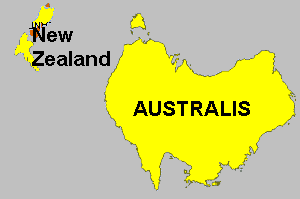
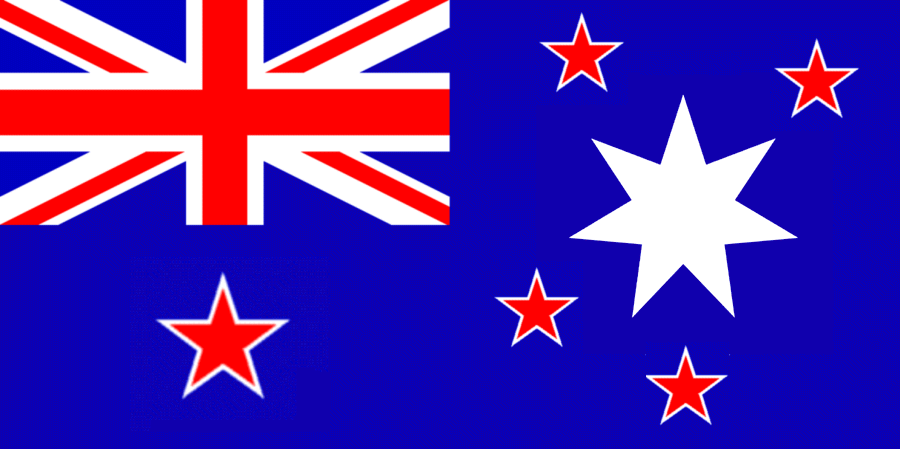
Distance 1200 miles NZ to Australis. Australis Flag.
Please note: all of the outcomes of this alternate reality are drawn directly from my imagination and are not to be taken seriously, though parts of this are drawn from reality to create the historical start point.
All of the outcomes are to fuel my imagination of what 'Australis' may produce for a navy leading up to and into the second world war. It is entirely probable that the ships would be designs produced for not only the Royal Navy but also The Australis and South African navies. Why spend money on designing your own when you can copy someone elses', as long as the design suits what you want. I figure that even with Australis participating fully in the Industrial revolution, its shipbuilding industry would still be limited with material and ships themselves still being sourced from Britain, untill such time as the necessary experience had been gained. With many designs from the First World War enduring to take part in the Second World War it is nice to see what these ships may have looked like with a 1930's rebuild.
The two major shipbuilding areas are Newcastle and Adelaide. Major ports with large docking facilities are Darwin, Perth, Adelaide, Melbourne, Sydney, Newcastle, Brisbane, Auckland, and Christchurch. Other large seaside centers have various infrastructure to support naval vessels. Sydney does have a Navy dockyard which while it is capable of building ships it is mainly used for refit and repair till the later 1930's when it is also used for the rebuilding program of the old ships.